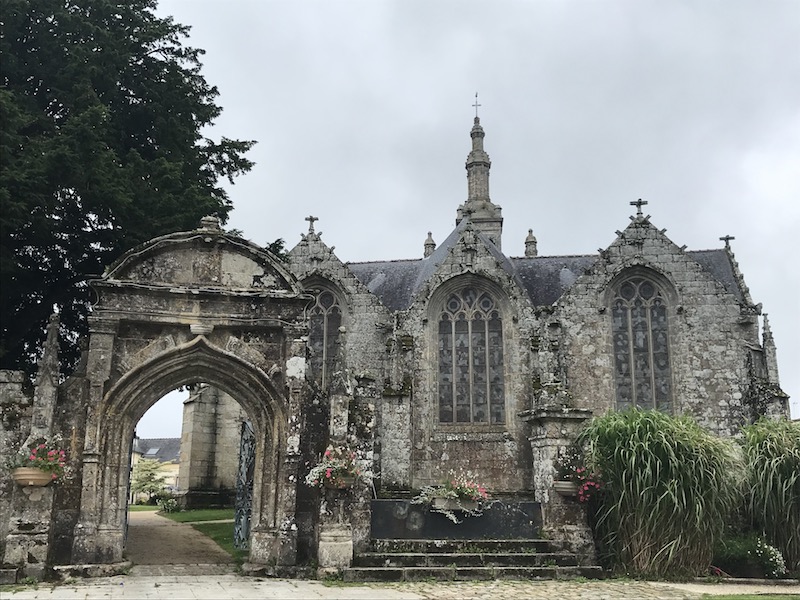Our Blog - Bretagne Trip - Summer 2021 - Plogonnec, France
We visited the small town of Plogonnec, which is one of the few that we visited that were actually growing, up to a little over 3100 people in 2017. The name comes from "Ploe" meaning parish and from Saint Connec who was a companion of Saint Pol Aurélien (the patron saint of the town of Saint-Pol-de-Léon). Saint Connec's name in olden times was Thégonnec, hence the "plo" and "gonnec".
The town has an interesting way of dealing with former landfills. In one former landfill, which is unsuitable for cultivation and urbanization, the town has a photovoltaic plant is made up of 1,900 panels which produce the equivalent of 820 MWh/year, which is the average consumption of 200 households, excluding heating.
The first site is the Église Saint Thurien. The current building was started in the 15th century, and while there are still some remains from the 15th century, most of what is there today is from the 16th century. The bell tower was started in 1657 and altered in the 18th century, while the sacristy was built in 1864. The very tall bell tower seems to be out of proportion to the rest of the church, which is fairly low. You can see the yellow jersey on the front, which was there from when the Tour de France went through the town a few months back.
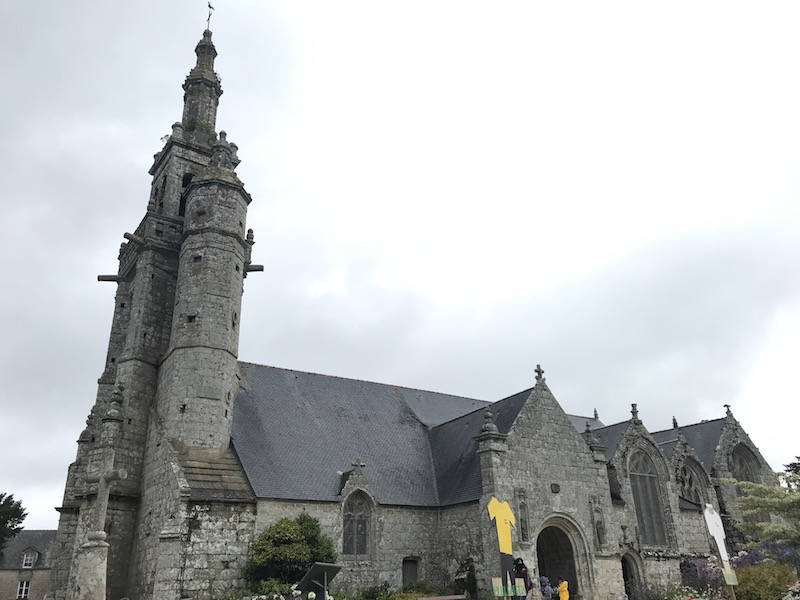

The bell tower, added in 1657, is in a Beaumanoir style and is taller than I think it should be for how low the rest of the church is. It had some old statues and carvings around the door.
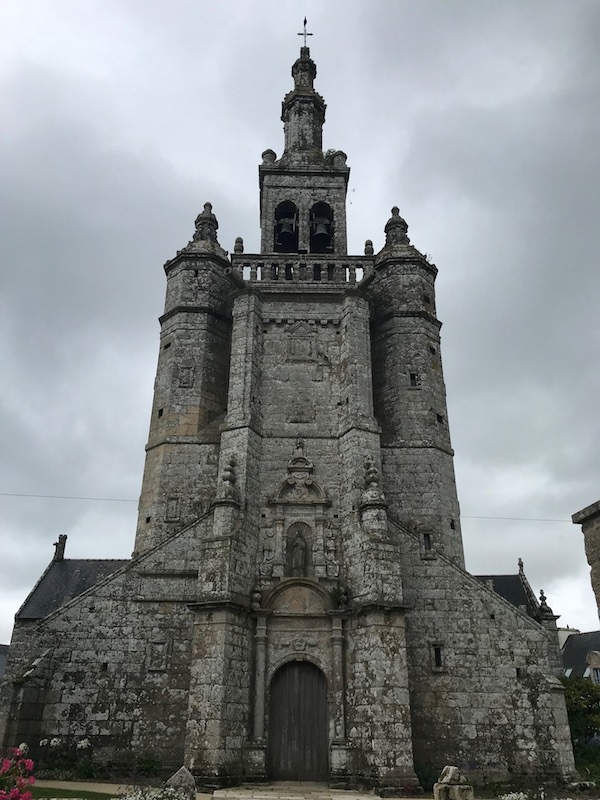
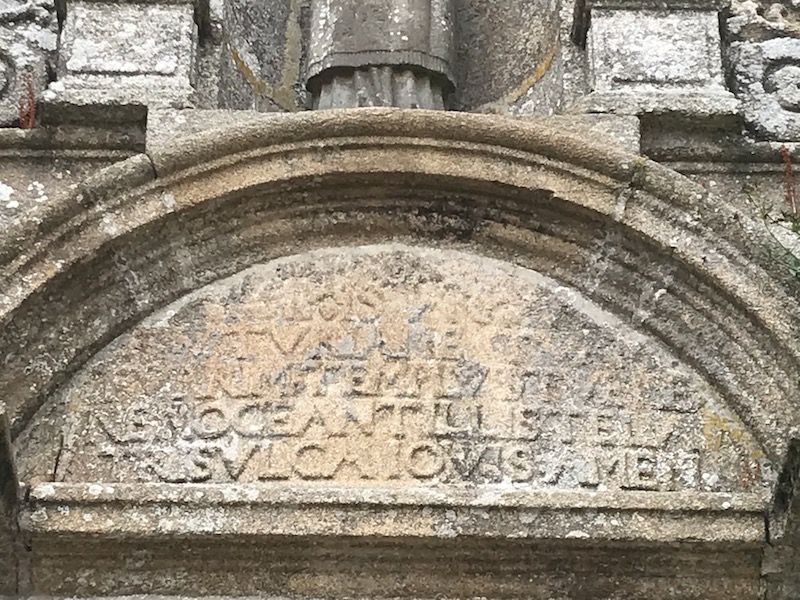


One of the things that you see right away when you go inside is that the ceilings are quite low and has the shape of the bottom of a boat. We've seen this type of ceiling in multiple churches in Brittany, and it seems like that the symbolism of a ship comes from the story of Noah's Ark. This ceiling had painted curved panels in the nave and slanted ones in the aisles.
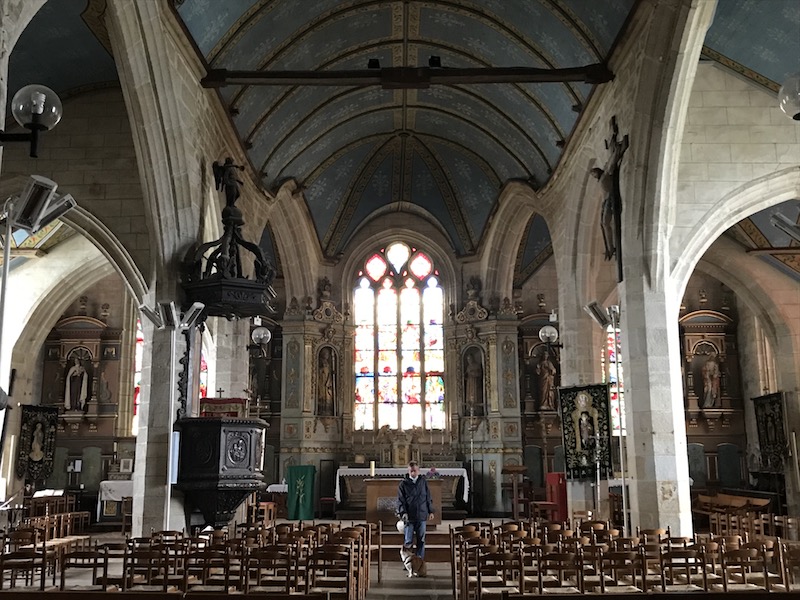
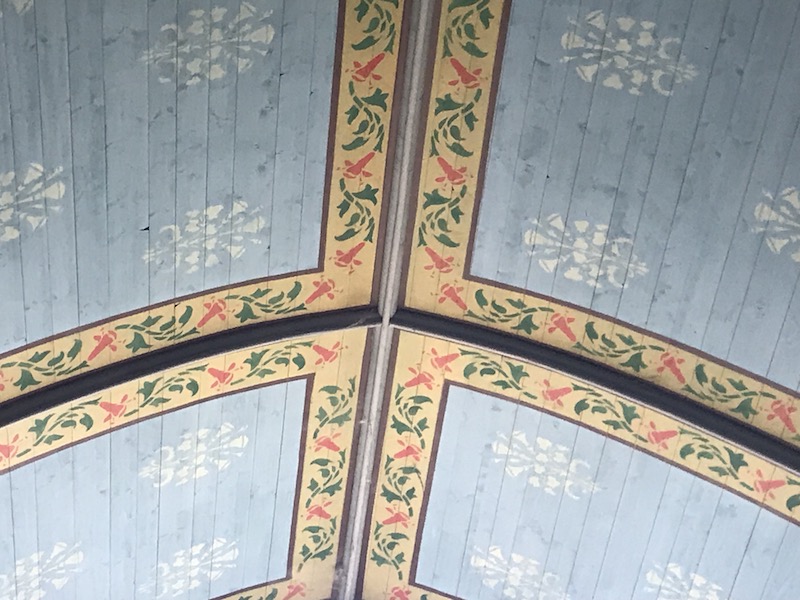
This first stained-glass window depicts The Passion of Christ, and was done in 1520. Across the bottom are 4 coats-of-arms that were added in 1904 and correspond to 4 important families in Plogonnec. Just above these shields is a scene with a noble couple (most likely the couple who donated money for the window) being presented by John the Baptist (the left-most pane), then Christ carrying the cross (moving right one pane), then Christ being presented to Pontius Pilate, and then the right-most pane is another donor couple, this time being presented by Saint Michael. Above we have Christ on the cross with a red background, then the lifeless body coming down from the cross, followed by the entombment (in a blue coffin), and finally the Resurrection, with Christ stepping out of the coffin.
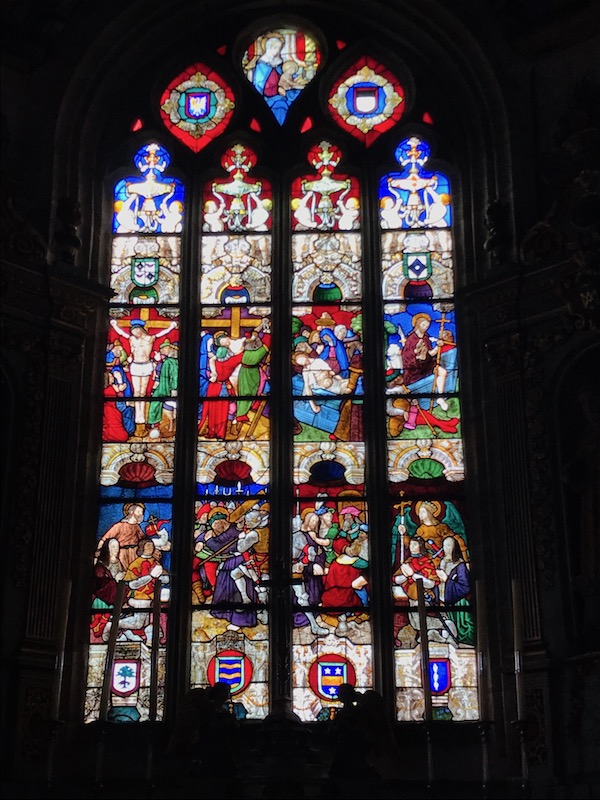
This window dates from the early 16th century (shortly after 1501). The upper 2/3 shows scenes from the Last Judgement and the lower 1/3 showing donors. For the Donor panel, I found an article that said that this was composed (added) during a restoration in 1878. All 3 parts were in stained glass windows in this church, but moved from other windows to this one. The right and left show donors to the church, while the middle shows the Annunciation. The middle section shows the Last Judgement with bodies (in white) and demonic beasts (in green, red, or blue). In the right-most section, you can see an angel pulling the bodies of those resurrected. Above the demons are angels with trumpets and then at the top, we have Christ above everyone including a set of saints who raise their eyes towards Christ.
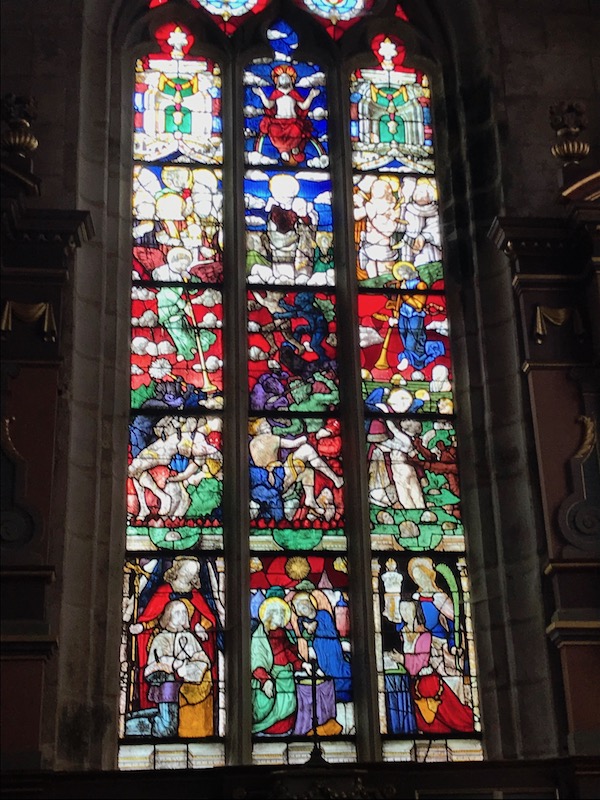
These two smaller windows shows various scenes from the life of Saint Thurien.
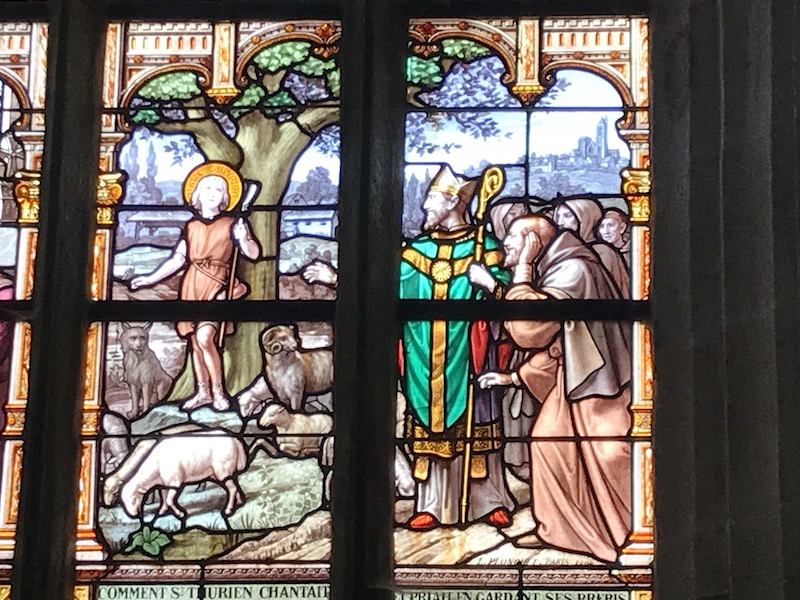

This is a nice status of Sainte Germaine in polychrome stone.
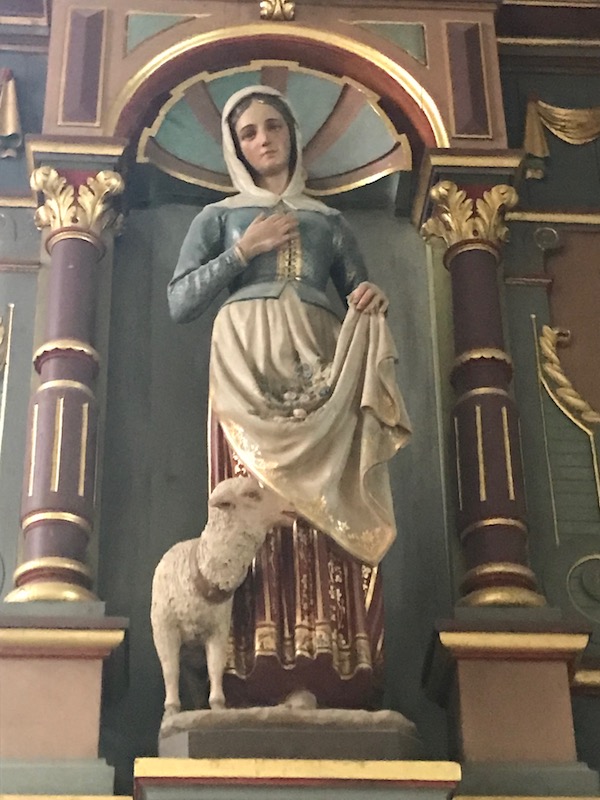
The main altar dates from the beginning of the 18th century. It is carved wood, painted green with two niches with gilded pilasters and garlands. Having carved wood altars seemed to be fairly common in Brittany, compared to marble altars in the South.
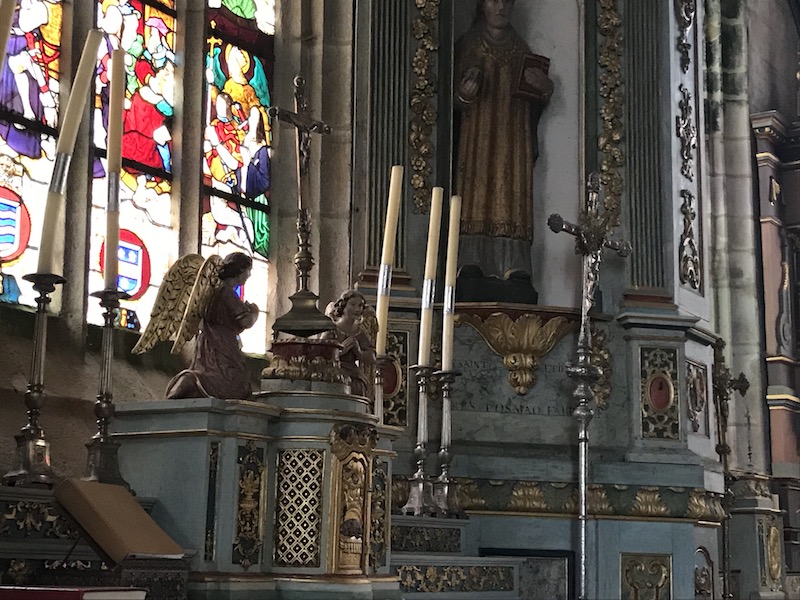
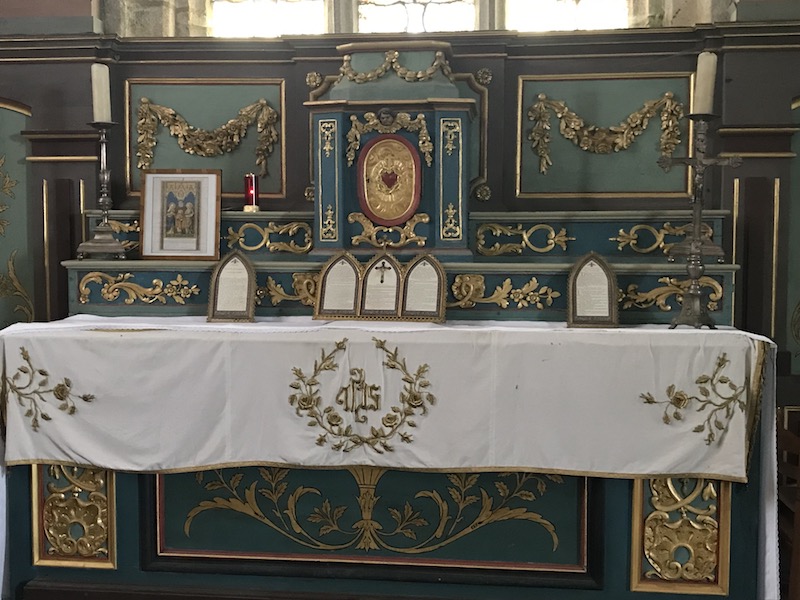
The square is adorned with a 16th century Gothic triumphal arch, with a crown and a pediment from 1730.
